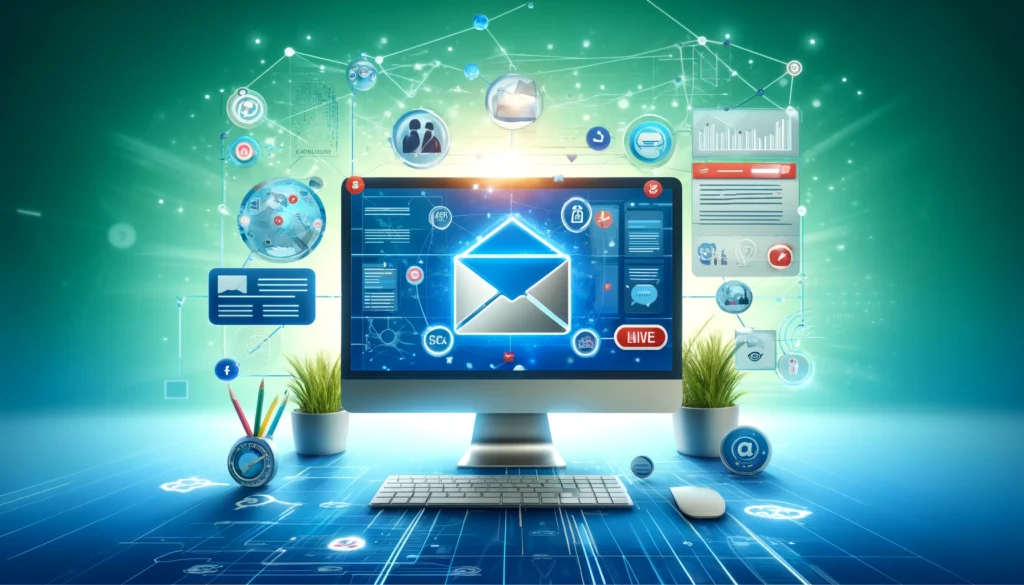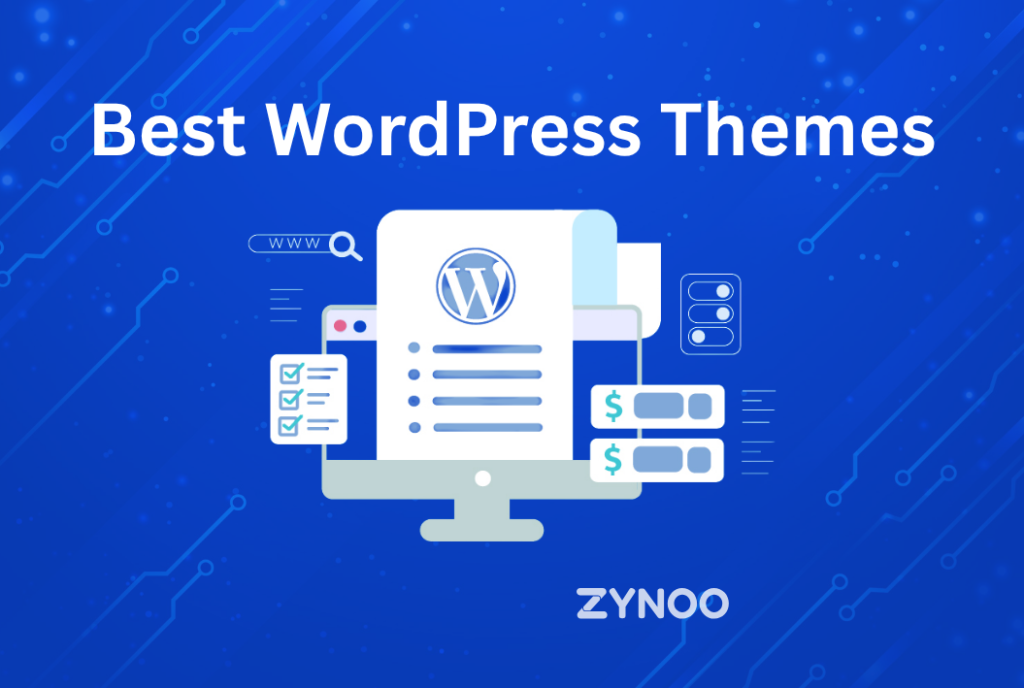
Best Practices for Email Marketing
Email marketing remains one of the most powerful tools for businesses to reach their audience. It allows for direct communication, fosters customer relationships, and drives conversions. To maximize the benefits of email marketing, adhering to best practices is essential. This guide will explore the key strategies and techniques to ensure your email marketing campaigns are effective and successful.
Understanding Email Marketing
Email marketing involves sending emails to prospects and customers to promote products, services, or valuable information. It has evolved significantly from its early days, becoming more sophisticated and personalized. Today, email marketing is integral to digital marketing strategies, offering a high return on investment (ROI) and measurable results.
Building a Quality Email List
The foundation of any successful email marketing campaign is a high-quality email list. A quality list comprises engaged subscribers who have opted in to receive communications from your business. There are several strategies to build and maintain such a list:
- Opt-in Forms: Use attractive and straightforward opt-in forms on your website and social media pages. Ensure the value proposition for subscribing is clear.
- Incentives: Offer incentives such as discounts, free resources, or exclusive content to encourage sign-ups.
- Regular Clean-Up: Periodically clean your list to remove inactive subscribers, reducing bounce rates and improving deliverability.
Segmentation and Personalization
Segmentation involves dividing your email list into smaller groups based on specific criteria such as demographics, purchase history, or engagement levels. This allows for targeted and relevant communication. Personalization goes a step further by tailoring the content to individual recipients.
- Benefits of Segmentation: Segmented emails have higher open and click-through rates. They ensure the right message reaches the right audience.
- Methods for Personalization: Use personalized subject lines, address recipients by name, and tailor content based on their preferences and behavior.
Crafting Engaging Subject Lines
The subject line is the first impression your email makes. It determines whether the recipient will open the email or not. Crafting compelling subject lines is an art:
- Techniques: Use action-oriented language, create a sense of urgency or curiosity, and keep it short and sweet.
- A/B Testing: Test different subject lines to see which ones perform best. Analyze open rates to determine effectiveness.
Designing Effective Email Templates
The design of your email should be visually appealing and aligned with your brand. Key elements of an effective email design include:
- Responsive Design: Ensure your emails look good on all devices, especially mobile.
- Brand Consistency: Use your brand colors, fonts, and logos to maintain consistency.
- Clear Call to Action (CTA): Make your CTAs prominent and easy to click.
Creating Valuable Content
Content is the heart of your email. It should provide value to your subscribers and align with their interests:
- Types of Content: Include a mix of educational articles, promotional offers, product updates, and customer stories.
- Content Strategies: Plan your content ahead of time, and ensure it is relevant and engaging.
- Importance of Value: Always prioritize delivering value over promotional messages to build trust and loyalty.
Timing and Frequency of Emails
When and how often you send emails can significantly impact your campaign’s success:
- Optimal Sending Times: Test different times to find when your audience is most responsive. Commonly effective times include mid-morning and early afternoon.
- Frequency Strategies: Avoid overwhelming your subscribers with too many emails. Find a balance that keeps your audience engaged without causing fatigue.
Utilizing Automation
Automation can streamline your email marketing efforts and ensure timely and relevant communication:
- Benefits of Automation: Saves time, increases efficiency, and allows for personalized engagement at scale.
- Types of Automated Emails: Welcome series, abandoned cart reminders, post-purchase follow-ups, and re-engagement campaigns.
A/B Testing and Analytics
Continuous improvement is crucial for email marketing success. A/B testing and analytics help you refine your strategies:
- Importance of Testing: Experiment with different elements of your emails, such as subject lines, images, and CTAs.
- Key Metrics to Track: Open rates, click-through rates, conversion rates, and unsubscribe rates. Use these metrics to gauge performance and make data-driven decisions.
Ensuring Deliverability
Deliverability is the ability of your emails to reach your subscribers’ inboxes. Factors affecting deliverability include:
- Email Authentication: Implement SPF, DKIM, and DMARC to authenticate your emails.
- Avoiding Spam Filters: Avoid spammy language, excessive use of exclamation marks, and misleading subject lines.
Complying with Legal Requirements
Compliance with email marketing laws is non-negotiable. Key regulations include:
- CAN-SPAM Act: Requires clear identification of commercial emails, an opt-out mechanism, and a physical address.
- GDPR: Focuses on data protection and privacy for individuals within the European Union. Requires explicit consent for email communications.
- Best Practices for Compliance: Clearly state how you will use subscribers’ information, provide easy opt-out options, and honor unsubscribe requests promptly.
Integrating with Other Marketing Channels
Email marketing works best when integrated with other marketing channels:
- Social Media: Promote email sign-ups on your social media platforms and share email content to reach a broader audience.
- Content Marketing: Use emails to distribute valuable content and drive traffic to your blog or website.
- Cross-Channel Campaigns: Coordinate email campaigns with other marketing efforts, such as paid ads and influencer collaborations, for a cohesive strategy.
Measuring Success and ROI
Measuring the success of your email marketing campaigns is essential for understanding their effectiveness and ROI:
- KPIs: Track key performance indicators like open rates, click-through rates, conversion rates, and ROI.
- Calculating ROI: Compare the revenue generated from your email campaigns to the costs involved.
- Interpreting Results: Use analytics to identify trends, strengths, and areas for improvement.
Future Trends in Email Marketing
Staying ahead of emerging trends can give you a competitive edge:
- AI and Machine Learning: Use AI to analyze subscriber behavior and optimize email content and timing.
- Interactive Emails: Incorporate elements like surveys, polls, and interactive content to engage recipients.
- Privacy and Data Protection: Increasing focus on privacy regulations and ethical data use will shape future email marketing strategies.
Common Mistakes to Avoid
Avoiding common pitfalls can enhance your email marketing effectiveness:
- Overloading with Information: Keep emails concise and focused.
- Ignoring Mobile Users: Ensure your emails are mobile-friendly.
- Neglecting Testing: Regularly test different aspects of your campaigns to identify what works best.
Case Studies of Successful Campaigns
Learning from successful campaigns can provide valuable insights:
- Example 1: A retail brand increased sales by 30% through personalized product recommendations.
- Example 2: A B2B company boosted lead generation with a well-timed re-engagement campaign.
Best Practices for Email Marketing
The best practices for email marketing include building a quality email list, segmenting and personalizing emails, crafting engaging subject lines, designing effective templates, creating valuable content, optimizing timing and frequency, utilizing automation, conducting A/B testing and analytics, ensuring deliverability, complying with legal requirements, integrating with other marketing channels, measuring success and ROI, staying updated with future trends, and avoiding common mistakes.
Conclusion
Email marketing continues to be a powerful tool for businesses of all sizes. By following best practices, you can enhance your campaigns, foster stronger relationships with your audience, and achieve better results. Remember to continuously test, analyze, and refine your strategies to stay ahead in the ever-evolving landscape of email marketing.



